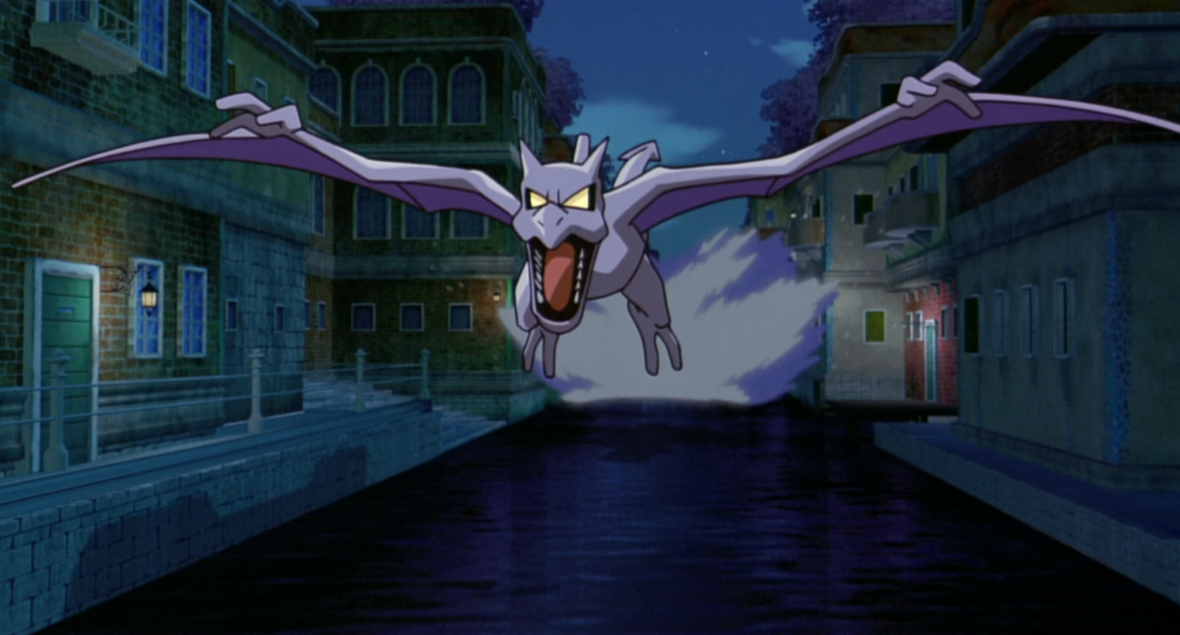Aerodactyl is a dual type Rock and Flying Fossil Pokemon introduced in Generation I. It is resurrected from an Old Amber, and while it is not known to evolve into or from any other Pokemon, it can Mega Evolve into Mega Aerodactyl using the Aerodactylite. Take a look below for 27 awesome and fascinating facts about Aerodactyl.
1. Aerodactyl is a reptilian, bipedal Pokemon with large, membranous wings.
2. It has small, sharply pointed ears, narrow eyes, a ridged snout with a gaping mouth, and strong lower jaw full of serrated fangs.
3. Its body is covered in light purplish gray skin with violet wing membranes.
4. Aerodactyl’s wings consist of a membrane running from the side of the body to the tip of an elongated finger.
5. The clawed hands at the bend of each wing allow it to grasp objects.
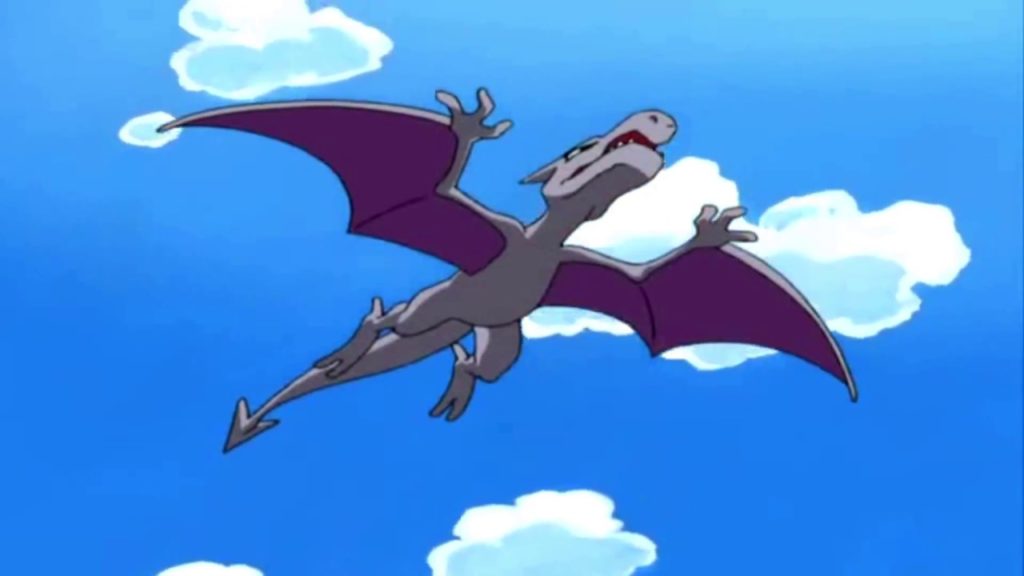
6. There is a hump-like ridge with a single spike on its back and it has a strong tail with an arrow-shaped tip.
7. Its talon-like feet have two toes in front and one in the back and are capable of scooping up and tightly clutching its prey in flight.
8. Aerodactyl is extant using Fossil revitalization, but is considered extinct in the wild.
9. Due to the sharp appearance of Aerodactyl’s fangs, it was originally thought to be exclusively a carnivore. However, the anime shows it joyfully consuming fruit.
10. Its serrated fangs and ferocious attitude were nevertheless very imposing, and it is said to be have been capable of effortlessly ripping out enemies’ throats.
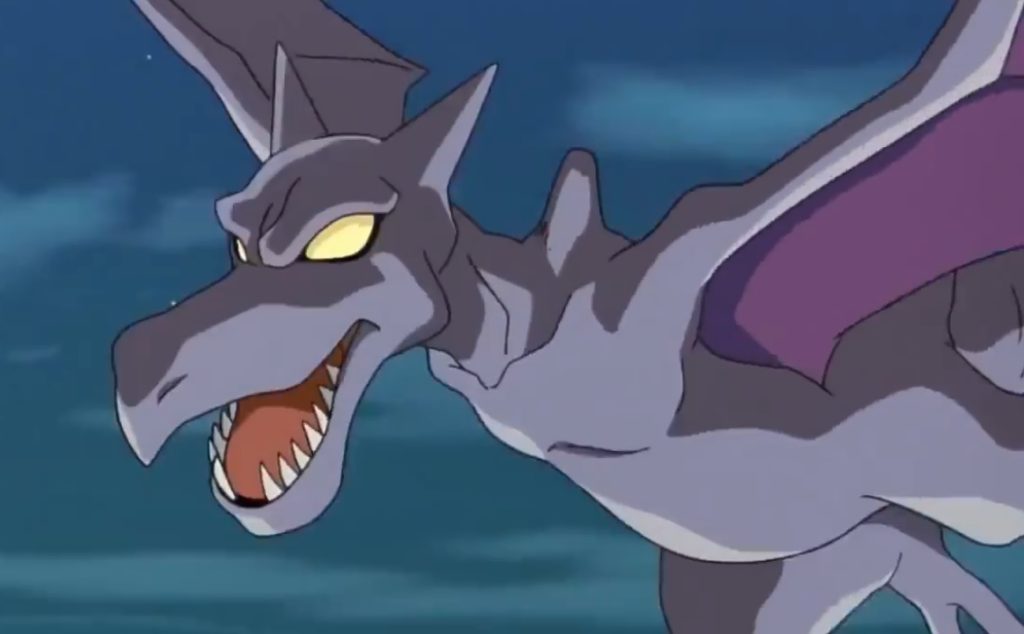
11. By spreading its impressive wings, Aerodactyl is believed to have flown by gliding through the skies, freely letting out its high-pitched cries. However, its walk was weak and slow when it touched ground.
12. When at rest it enjoyed the safety and seclusion of the mountains, where it liked to nest.
13. When Aerodactyl Mega Evolves, its eyes turn green and body begins to turn to stone, which some researchers believe was its original appearance before fossilization.
14. It grows larger in size and sprouts jagged black spikes all over its body: five spikes at the wrist joint of each wing replacing its hands, three small spikes along its tail, one spike on each ear, and a long spike on its chin.
15. The spike on its back and its rear talons have also become black and stony. Rocky plates cover its eyebrows and the corners of its jaw. Similar stone ornaments are present on its chest on its torso: two small ridges flanking a longer ridge. Because of the burden of Mega Evolution, Mega Aerodactyl is fiercer and more irritable than before.
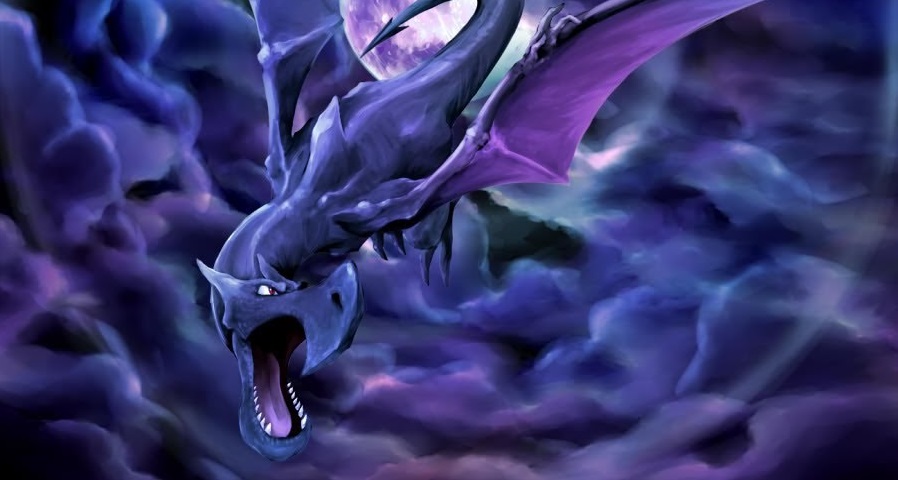
16. Aerodactyl shares its category with Arctovish, Arctozolt, Dracovish, and Dracozolt. They are all know as the Fossil Pokémon.
17. Aerodactyl was the inspiration for the naming of Aerodactylus, a genus of pterosaurs.
18. Aerodactyl is the only Fossil Pokémon that does not have an evolution or pre-evolution, and also the only one with a Mega Evolved form.
19. It is also the only Fossil Pokémon that can be obtained in any way other than breeding, reviving its Fossil or from the Dream World: it is available through an in-game trade in Generation II, as a gift in Generation VII, and is one of Hayley’s trades.
20. In the Pokémon Red and Blue beta, Aerodactyl was originally known as “Ptera”, its Japanese name.
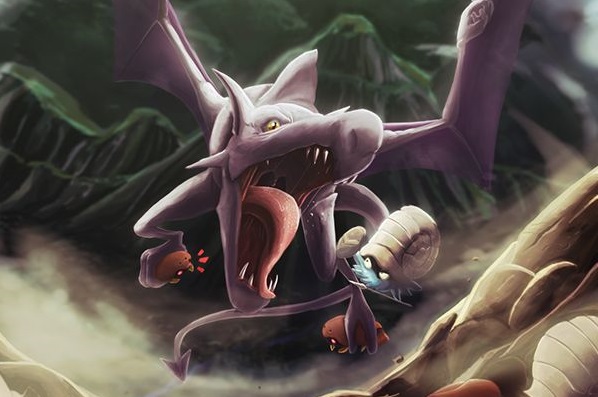
21. Aerodactyl is the only Pokémon owned by Lance and Clair in the core series who is not a Dragon-type Pokémon nor a Pokémon belonging to the Dragon Egg group. This is likely due to pterosaurs being known as “winged dragons”in Japanese, further explaining why its appearance is influenced by that of wyverns.
22. Mega Aerodactyl has the highest base Speed stat of all Rock-type Pokémon.
23. Mega Aerodactyl has the highest base stat total of all Fossil Pokémon.
24. Aerodactyl is one of four non-Hoenn Dex Pokémon available in Pokémon Pinball: Ruby & Sapphire. The others are Chikorita, Cyndaquil and Totodile.
25. Mega Aerodactyl has a unique base stat total of 615.
26. Aerodactyl’s design is mostly based on rhamphorhynchids, a family of toothed pterosaurs. However, its pointed wings, spaded tail, and robust jaws also give it the semblance of a dragon, specifically wyverns.
27. Aerodactyl’s name is a combination of aero (Greek for air) and pterodactyl.

